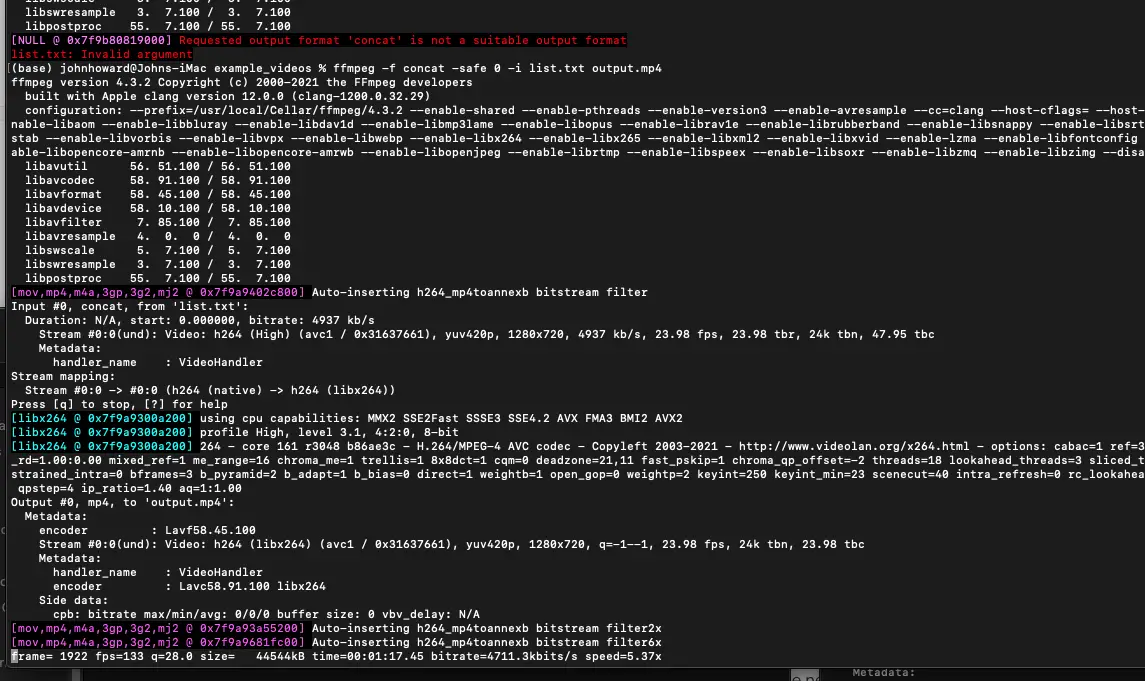

The "hide_banner" flag helps hide FFmpeg banners and other details, and only shows the media file information. Normally it will require to specify the input file and output file, but in this case, the output file can be omitted since we only need to get some basic information. FFmpeg Get Video Infoįirst, you can easily get the information of a given media file (say input.mp4) using FFmpeg. Here at VideoProc, we also prepare you a step-by-step tutorial about how to install FFmpeg. If you are just getting started, first you'll need to download the source code or a build from the official download page, and install it on your device. So here in this post, I will introduce 31 most commonly used FFmpeg commands with examples to perform various tasks like converting media formats, trimming videos, extracting audio/video streams, etc. You will need to type commands with your keyboard to transcode multimedia files and streams.

It packs many encoders and decoders, making it powerful enough to support almost all common and uncommon multimedia formats.įFmpeg comes with a learning curve especially if you are new to a command line tool. net (3) about (1) action script (1) advice (1) amazing (1) Android (1) asp.FFmpeg is a free and open-source command line-based tool to handle video, audio, and other multimedia files. If in doubt about which method to use, try the concat demuxer.įFmpeg FAQ: How can I join video files? FFmpeg Wiki: How to concatenate (join, merge) media files This method does not work for many formats, including MP4, due to the nature of these formats and the simplistic concatenation performed by this method. ffmpeg -i "concat:input1|input2" -codec copy output.mkv Use this method with formats that support file-level concatenation ( MPEG-1, MPEG-2 PS, DV). $ ffmpeg -f concat -safe 0 -i mylist.txt -c copy output.mp4įor Windows: (echo file 'first file.mp4' & echo file 'second file.mp4' )>list.txtįfmpeg -safe 0 -f concat -i list.txt -c copy output.mp4 Use this method when you want to avoid a re-encode and your format does not support file-level concatenation (most files used by general users do not support file-level concatenation).

ffmpeg -i opening.mkv -i episode.mkv -i ending.mkv \ If you want to avoid the re-encode, you could re-encode just the inputs that don’t match so they share the same codec and other parameters, then use the concat demuxer to avoid re-encoding everything. Note that this method performs a re-encode of all inputs. Use this method if your inputs do not have the same parameters (width, height, etc), or are not the same formats/codecs, or if you want to perform any filtering. Since I always forget how to do this, here it is for future me and you! 😉


 0 kommentar(er)
0 kommentar(er)
